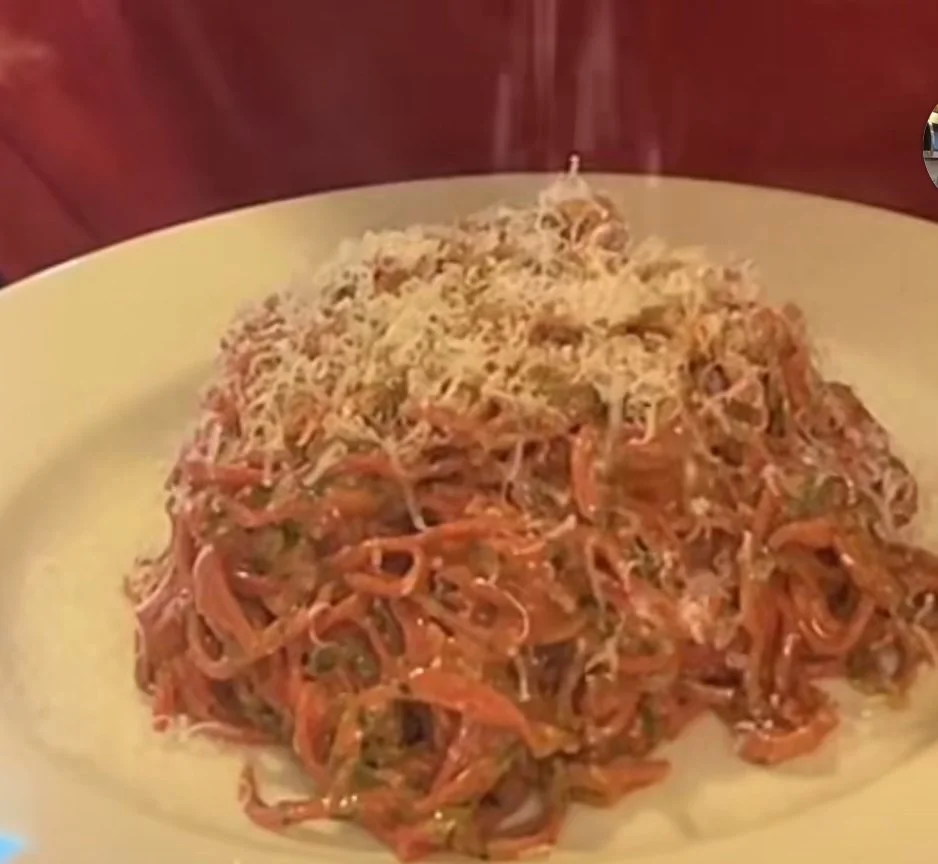Beetroot Pasta with beet top Pesto
This is part of a new series that I will be starting here on Pastalove, a series where I’ll be sharing how to make various colored pastas, because guess what? Pasta does not come in just one color. It turns out there are ways to turn out beautifully colored pasta, and rather than messing around with chemically enhanced food coloring, I decided to try to make each batch of pasta using natural colors and food dyes, but still delivering on a ton of flavor.
Today’s color of choice happens to be a personal favorite: red. There are many red ingredients out there, some of which are being used as natural food dye or even paints. Paprika, pomegranate juice, and of course there are beets.
Beets seem to be a hit or miss type of deal among food lovers, some people tend to avoid them because they do stain your fingers and they do take some time to cook, but I find that the ruby red color combined with their sweet, earthy flavor makes beets a top candidate for making red pasta.
Serving options are unlimited for red pasta, from light tomato sauces to cream sauces, but today I’ve decided to cut down on waste and use every part of the beet because, guess what? The root of a beet is not the only part that’s edible. I’ve decided to take the green tops of the beets and use them to make a simple pesto that I will mix with my pasta.
It should make for a light dinner that will be hard to beet!
Serves 4
For the Beetroot Pasta:
1 small beet (roughly 5 ounces)
3 eggs
350-400g (12-14oz) 00 flour or all purpose flour, plus more for dusting
Salt, for the pasta water
For the Beet top Pesto:
2 cups packed beetroot greens (from 1 large bunch of beets)
1/2 cup chopped walnuts, toasted, plus more for topping
2 garlic cloves
Juice of 1/2 a lemon
Salt, to taste
1/2 cup extra virgin olive oil
1/3 cup finely grated Parmigiano Reggiano, plus more for topping
Wrap the beetroot in foil, place onto a baking sheet, then roast in a 400 degree oven for about 35-45 minutes, or until a fork can easily slide in. Let the beet cool until you can handle then use a clean tea towel or paper towel to remove the skin. (see note 1) Cut the beet into chunks, then transfer to a food processor/blender and blend until it forms a thick puree.
Add the eggs and 12oz of the flour to the food processor, then pulse until a scraggy dough forms, adding more flour if needed. (See note 2)
Dump the dough onto a lightly floured surface, then knead for a few minutes, or until it becomes smooth and elastic. Cover the dough with plastic wrap, then let it cool for at least 20 minutes.
Meanwhile, wash the food processor then combine the beet greens with the 1/2 cup of walnuts, garlic, lemon, and a pinch of salt. Blend until it all breaks down, then slowly drizzle in the olive oil until the mixture forms a spreadable paste. (see note 3) Add the cheese, then blend until combined. Season with salt to taste.
Bring a large pot of salted water to a simmer. Using a rolling pin or pasta roller, roll out the beetroot pasta dough, starting with the widest setting then working your way down one notch at a time until you get a thin sheet of dough that’s starting to become transparent. Cut the dough into 12 inch lengths and run through a fettuccine cutter. (See note 4)
Once all of the pasta is cut, drop into the simmering water and cook for about 2 minutes, or until the pasta floats to the surface of the water. Reserve about 1/3 cup of pasta water, then drain.
Toss the pasta with the pesto you just made, adding some of the pasta cooking water if you need to loosen, then serve, topping with more walnuts and a grating of cheese.
Notes
Don’t want to bother with cooking your beet? That’s fine, precooked beets are available at most grocery stores, I just wanted to have the beet greens to use for my pesto.
How much flour you actually need will depend on the moisture level of your beetroot. You can always add more flour if the dough seems too wet or sticky.
When making adding the oil to your pesto, I would err on the side of making it a bit too loose as the cheese will help thicken it.
Once your pasta is cut, you can cook it right away, or you could lay it out on a wire rack and leave it to dry, then boil it as you would boil any boxed pasta.






